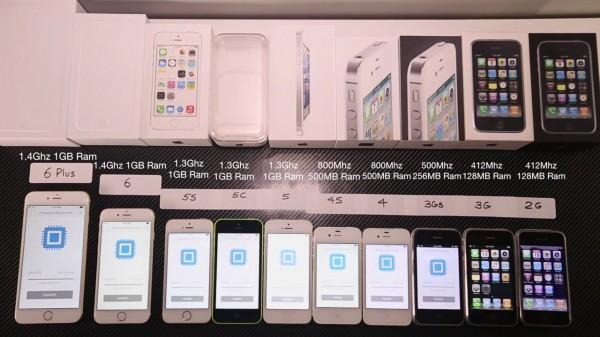All iPhone generations in retrospect: incremental changes
Another year, another iPhone, now on its 6th generation, 9th and 10th if you're actually counting models. But how much has changed between these devices? EverythingApplePro does a quick comparison and shows not much, at least when you compare iPhone models to their immediate predecessors.
Smartphone lifecycles seem to encourage going out for a new model every so often, and while Apple does announce a new iPhone every year, it seem that it takes a more conservative outlook. Not only does it make available the latest version of iOS to one or two generations old devices, the changes between those devices are also quite incremental, allowing you to hold on to them as long as you can, or at least until iOS no longer supports that model.
Booting up all iPhone generations from the iPhone 2G to the 6 and 6 Plus revealed some nice surprises. Clearly, raw numbers and specs aren't everything, as the 5s beat the latest gen just a bit. There isn't a fixed pattern here, and the iPhone 3G managed to outrun the iPhone 4. The reason given here is that the iPhone 4 was given iOS 7, even if in theory it is a bit too much to handle for the old smartphone. But even so, newer iPhone generations have more software to load at boot, even if they have beefier hardware. Older models don't have much to worry about, so it creates a self-balancing system to some degree.

Running benchmark and web page loading tests of course demonstrate the power of newer devices, but even then the lead of successive generations aren't always clear cut. Of course, if you skip a few generations, you will definitely see exponential improvement thanks to hardware upgrades. But compared to their contemporaries in the Android world, iPhones sometimes look a tad underpowered, but deceptively so.
Apple can afford to seemingly skimp on throwing in the latest and greatest hardware because it can exercise a tighter grip over the whole ecosystem. In practical terms, this means that the company can closely optimize the hell out of the software and squeeze out every bit of juice from the hardware. And it can also enforce that mindset on third-party developers as well. What it means for the consumer is that there is no urgent need to jump into the next iPhone generation and that you can skip one or even two as long as you can afford it, or as long as it is supported by the latest iOS. That is, of course, unless you really need that latest feature or have the cash to spare.
